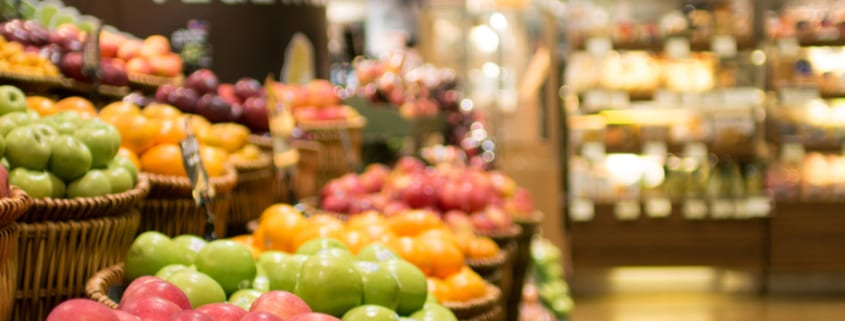Why Grocery Retailers Are Embracing Micro-Fulfillment Centers
Grocery stores are a key player within the retail industry due to their staying power driven by sustainability, convenience, and the provision of a cheaper alternative to eating out. The technological disruption has caused even highly stable grocers to experience a shift in how they operate and what shoppers expect from these retailers. While the majority of grocery shopping still takes place in-store, technological advancements coupled with the need for multitasking and getting tasks done as efficiently and quickly as possible has created a greater demand for online grocery shopping. In 2018 alone, online grocery sales in the United States totaled approximately $17.5 billion, a figure that is expected to increase to nearly $30 billion by 2021. As this demand continues to grow, grocery retailers are encountering a new challenge – efficiently fulfilling online demand without interfering with the store’s traditional operations.
In an effort to meet consumers’ expectations, reduce overhead costs, increase efficiency, and capture new customers, large retailers like Walmart, Kroger, and Target are embracing the concept of micro-fulfillment centers, also referred to as “dark stores” because of the lack of physical customers. These centers are designed to help retailers who are becoming inundated with online orders to compress their fulfillment times. Ultimately, shorter fulfillment times will enable grocers to keep up with current demand and prepare for an increasing future demand.
Read ahead to learn why micro-fulfillment centers are becoming a solution for effectively managing the growth of online grocery shopping.
What are micro-fulfillment centers and how do they work?
Micro-fulfillment centers are an emerging trend in food retail development, and as the name suggests, these centers have a significantly smaller footprint than other distribution facilities. Because they are typically located at off-site locations within dense urban areas, these centers are in close proximity to end consumers.
These tiny fulfillment centers house around 15,000 SKUs and eliminate the need for retailers to use existing in-store inventory to fulfill online orders. Instead, each online order that is placed is sent directly to a micro-fulfillment center where Artificial Intelligence (AI) and analytics are used to deliver high-density automated item-picking, making it possible for retailers to fulfill online orders quickly and more efficiently. For smaller grocery stores on the other hand, online orders are shipped directly to the fulfillment center.
Maximization of Store Space
For grocery retailers, the acceptance of online orders creates additional opportunities to attract consumers and to increase revenue. However, an influx of online orders can also create additional traffic and potential aisle jamming from workers who must manually select, bag, and prepare the items for delivery. This method of fulfilling online orders can cause items to go out-of-stock more frequently and can create congestion within the aisles.
With the addition of micro-fulfillment centers, stores can more effectively manage and maximize in-store space. Retailers can optimize store space by stacking goods strategically and taking advantage of free vertical space. Because micro-fulfillments centers typically occupy only 1/3 of a supermarket’s space, or about 5,000 to 20,000 square feet, these facilities present opportunities to maximize underutilized space inside of the store.
Minimization of Delivery Costs
By 2023, online grocery penetration is expected to increase from 2% to about 15% to 20%. In preparation for this increasing demand, the development of micro-fulfillment centers are becoming a viable solution for minimizing delivery costs. Delivering groceries from central warehouses to their destination is about twice that of delivering them from micro-fulfillment centers. With the rising costs of last-mile delivery, or the movement of goods from the transportation hub to its destination, micro-fulfillment centers are gaining traction amongst grocers who are seeking methods of reducing spiked delivery costs.
Read What Makes Grocery Stores a CRE Stronghold in the Turbulent Retail Sector? to learn more about the state of the grocery retail industry.











